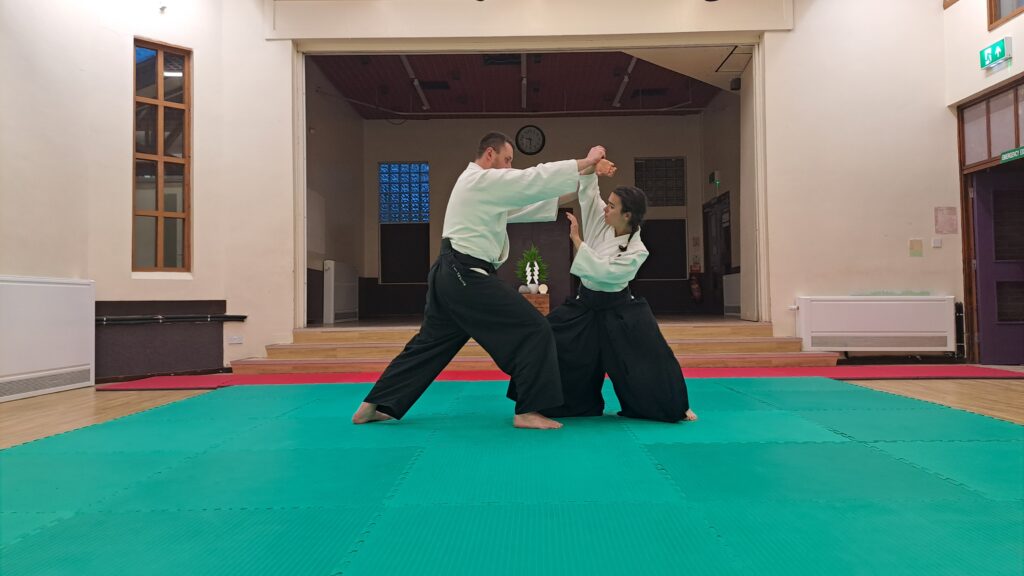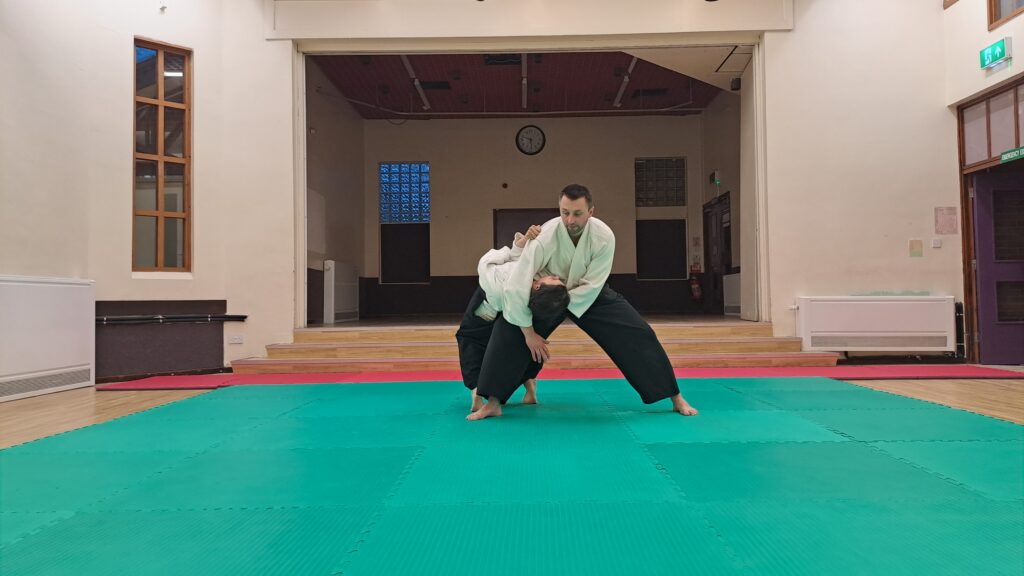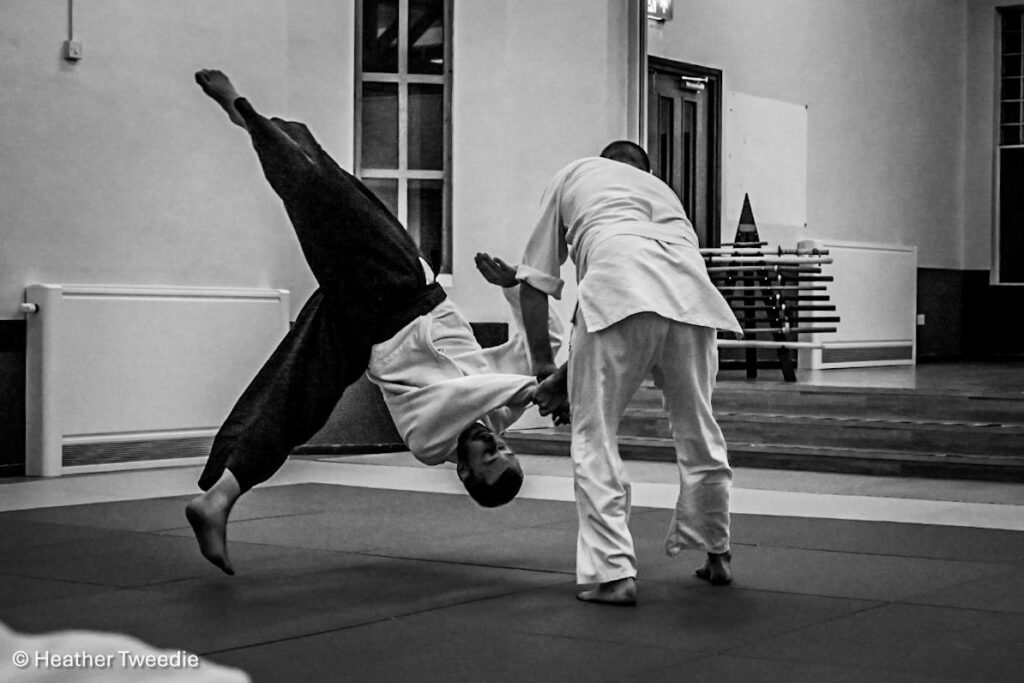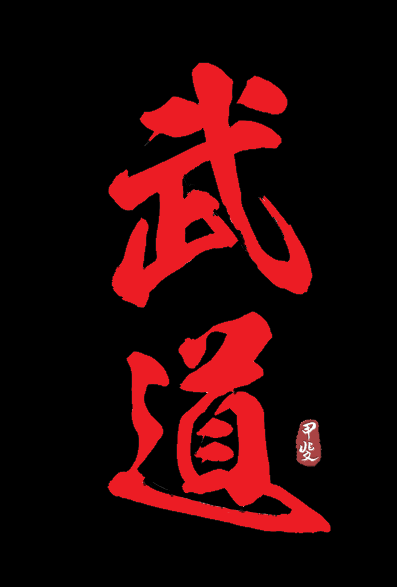
Aikido:
Aikido is a Japanese Martial Art whose origins can be traced back to the 12th Century. Aikido was created in the 1920’s by Morihei Ueshiba (1883 – 1969), one interpretation of the name is “The Art of Peace”. It is an art that does not seek to meet violence with violence yet maintains its martial origins.
Aikido is often characterized by its fluid and dynamic movement. We practice defence against a wide variety of strikes, punches and holds, including attacks with weapons. It is practiced by men and women of all ages.
Our style is influenced by the teaching of instructors from The Shiseikan Dojo, Meiji Jingu, Tokyo.
"In the moment you grip his hand tightly, suddenly your own physical power disappears and you are thrown, flying in an arc two or three meters to the rear. At that moment, you do not feel any power, but from the shock when you hit the mat, you realize that you have been subjected to some amazing energy"
- one student description of the actual feeling of the sensei's technique -
Literally Aikido means: AI – the harmony, KI – energy, DO – way or path



Budo:
It is believed that Budo can cultivate both the mind and body. However, if the meaning of Budo is unclear, then it is impossible to know what to train and indeed what method to utilise. In identifying Budo, it is important to understand why Judo (“the way of Yawara/Jujutsu”), Kendo (“the way of the sword”), Kyudo (“the way of the bow”), Aikido (“the way of Aiki”) and the like, are considered to be Budo (“martial ways”). To aid this clarification, the difference between “Michi (way)” and “Jutsu (technique)” should be known. Good guidelines and tuition have become indispensable for this aim, but if each person does not grasp what Budo is individually during practical training, then focus, concentration and discipline in Budo is not achieved. “Budo is the lifestyle of finding one’s way in the midst of the struggle of life and putting this way into practice.” In the process of putting this into practice, it is paramount that methods and the process of training to achieve a goal are mastered. If we employ the language of Bujutsu (“martial techniques”) and Bushido (”the way of the warrior”), it can also be phrased as follows: “Budo is the lifestyle of pursuing one’s own Bushido whilst maintaining the feeling of tension emanating from determining life or death; and this has to be put it into practice through Bujutsu training.” Therefore, training Budo involves practising both technique and spirit. This leads to the question of what is the relationship between Jutsu (“technique”) and Michi (“way”)?

Jutsu ("technique") and Michi ("way")
Since the pursuit of Bushido (spirit) and putting it into practice through Bujutsu (methods) are indispensable, one way of progression is by seeking a Michi (“way”) and then entering into Jutsu (“techniques”). However, generally, people who enter a Budojo (place for Budo), initially start through training Bujutsu (“techniques”) and later seek spirituality.
In other words, they proceed from Jutsu to Michi, and from there, knowing the relationship between Jutsu and Michi, improve both together. In Budo, pursuing Michi is getting to know one’s true character and feelings and search for one’s spiritual values; seen through the perspective of traditional culture, which can be best seen in Bushido. When putting this Michi into practice, one must be prepared to fight, even if dying in battle, depending upon the circumstances.
This strength should be the spirit of Budo. A further question is evoked as to how one should cultivate a strong spirit which transcends life and death? Here, each Bujutsu training has its own characteristics. However, that does not mean that Bujutsu alone is able to cultivate a strong spirit. It goes without saying that also sports and other things can train such a strong spirit-depending on the spiritual quest of the respective individual.
Today's Bujutsu (martial techniques)
In ancient times, warriors trained Bujutsu (martial techniques) in order to put it into practice as a tool for real fighting. Nowadays, however, Bujutsu is employed for personal development. Although determining life and death by Bujutsu has disappeared, there is no change regarding the fact that these techniques were born in warring times, and still contain actual fighting power.
I believe that if training is carried out with this feeling of tension, it is possible to obtain the skills and principles of fighting and thereby cultivate a strong spirit which transcends life and death.
I think that this is the greatest significance of practicing Bujutsu in today’s society.
Master Minoru Inaba, Meiyo Shihan
Shiseikan, Meiji Jingu, Tokyo, JAPAN

